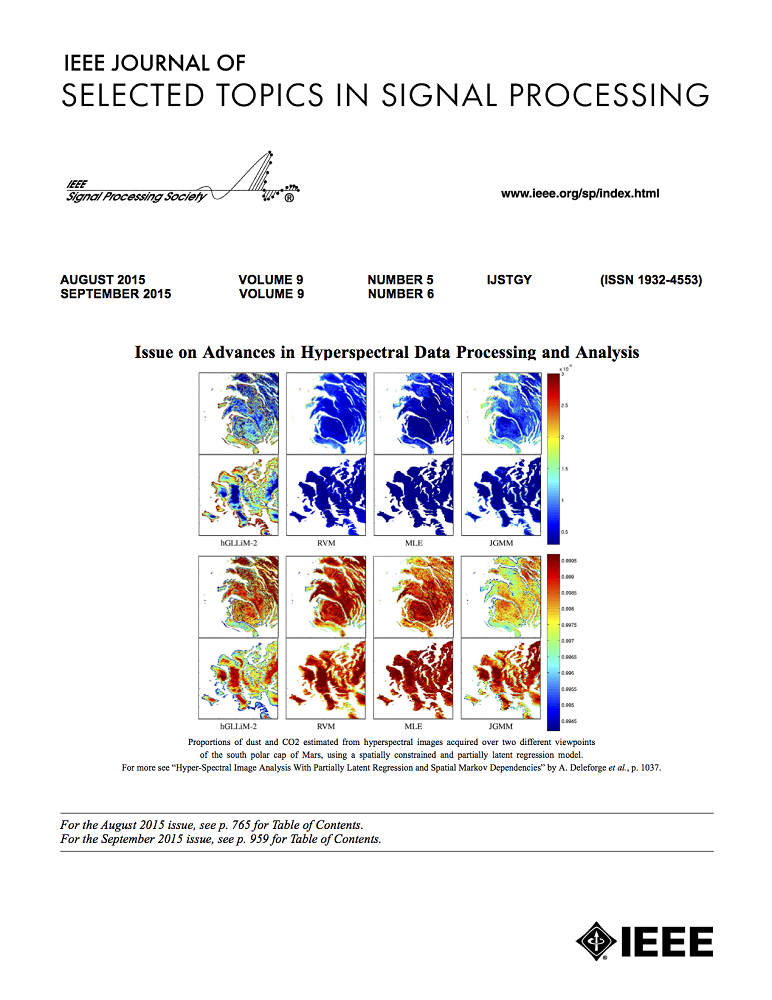Stochastic Geometry Analysis of Scalable Cell-Free RAN With Dynamic Association and Deployment
IF 8.7
1区 工程技术
Q1 ENGINEERING, ELECTRICAL & ELECTRONIC
IEEE Journal of Selected Topics in Signal Processing
Pub Date : 2025-01-27
DOI:10.1109/JSTSP.2025.3533897
引用次数: 0
Abstract
Cell-free radio access network (CF-RAN) breaks away from the traditional cellular network, forming a scalable wireless access network structure. Based on the conventional cell-free massive multiple input multiple output (CF-mMIMO) system, CF-RAN strategically partitions physical layer functionalities into remote radio unit (RRU), edge distributed unit (EDU) and user-centric distributed unit (UCDU), which enable the CF-mMIMO system to achieve a trade-off between complexity and performance in cooperative transmission. We use scalable full-pilot zero-forcing (FZF) combining/precoding in uplink/downlink and consider the impact of channel estimation error and pilot contamination, the closed-form expressions of uplink/downlink achievable signal-to-interference-noise ratio (SINR) of CF-RAN are given. For both uplink and downlink transmissions, we derive the closed-form achievable rate expressions when channel distribution information (CDI) or channel state information (CSI) is known in signal detection, respectively. Addressing the scalability of CF-RAN, the initial access of user equipment (UE) and dynamic RRU association scheme based on the contention mechanism, multiple RRU-EDU deployment schemes, as well as fractional uplink power control and downlink power allocation is considered. The deployment between RRU and EDU determines the performance of CF-RAN, in which we adopt random deployment, clustering deployment based on k-means algorithm, interleaving deployment based on genetic algorithm (GA), interleaving deployment based on graph coloring algorithm (GCA), respectively. Considering the spatial location randomness of UE and RRU, we model the locations of UE and RRU as two independent binomial point processes (BPP) within a limited area, and derive the expression of user rate coverage probability. Finally, the accuracy of our theoretical results is verified through Monte Carlo simulation.具有动态关联和部署的可扩展无小区无线局域网的随机几何分析
无蜂窝无线接入网(CF-RAN)脱离了传统的蜂窝网络,形成了可扩展的无线接入网结构。CF-RAN基于传统的无蜂窝大规模多输入多输出(CF-mMIMO)系统,将物理层功能战略性地划分为远程无线电单元(RRU)、边缘分布单元(EDU)和以用户为中心的分布单元(UCDU),使CF-mMIMO系统在协同传输中实现了复杂性和性能之间的权衡。在考虑信道估计误差和导频污染影响的基础上,采用可扩展的全导频强制零(FZF)组合/预编码方法,给出了CF-RAN上行/下行可实现信噪比的封闭表达式。对于上行链路和下行链路传输,我们分别推导了信号检测中信道分布信息(CDI)和信道状态信息(CSI)已知时的封闭可达速率表达式。考虑了CF-RAN的可扩展性、用户设备的初始接入和基于争用机制的动态RRU关联方案、多RRU- edu部署方案以及上行功率分式控制和下行功率分式分配。RRU和EDU之间的部署决定了CF-RAN的性能,其中我们分别采用随机部署、基于k-means算法的聚类部署、基于遗传算法(GA)的交错部署、基于图着色算法(GCA)的交错部署。考虑到UE和RRU的空间位置随机性,将UE和RRU在有限区域内的位置建模为两个独立的二项点过程(BPP),推导出用户速率覆盖概率的表达式。最后,通过蒙特卡罗仿真验证了理论结果的准确性。
本文章由计算机程序翻译,如有差异,请以英文原文为准。
求助全文
约1分钟内获得全文
求助全文
来源期刊

IEEE Journal of Selected Topics in Signal Processing
工程技术-工程:电子与电气
CiteScore
19.00
自引率
1.30%
发文量
135
审稿时长
3 months
期刊介绍:
The IEEE Journal of Selected Topics in Signal Processing (JSTSP) focuses on the Field of Interest of the IEEE Signal Processing Society, which encompasses the theory and application of various signal processing techniques. These techniques include filtering, coding, transmitting, estimating, detecting, analyzing, recognizing, synthesizing, recording, and reproducing signals using digital or analog devices. The term "signal" covers a wide range of data types, including audio, video, speech, image, communication, geophysical, sonar, radar, medical, musical, and others.
The journal format allows for in-depth exploration of signal processing topics, enabling the Society to cover both established and emerging areas. This includes interdisciplinary fields such as biomedical engineering and language processing, as well as areas not traditionally associated with engineering.
 求助内容:
求助内容: 应助结果提醒方式:
应助结果提醒方式:


